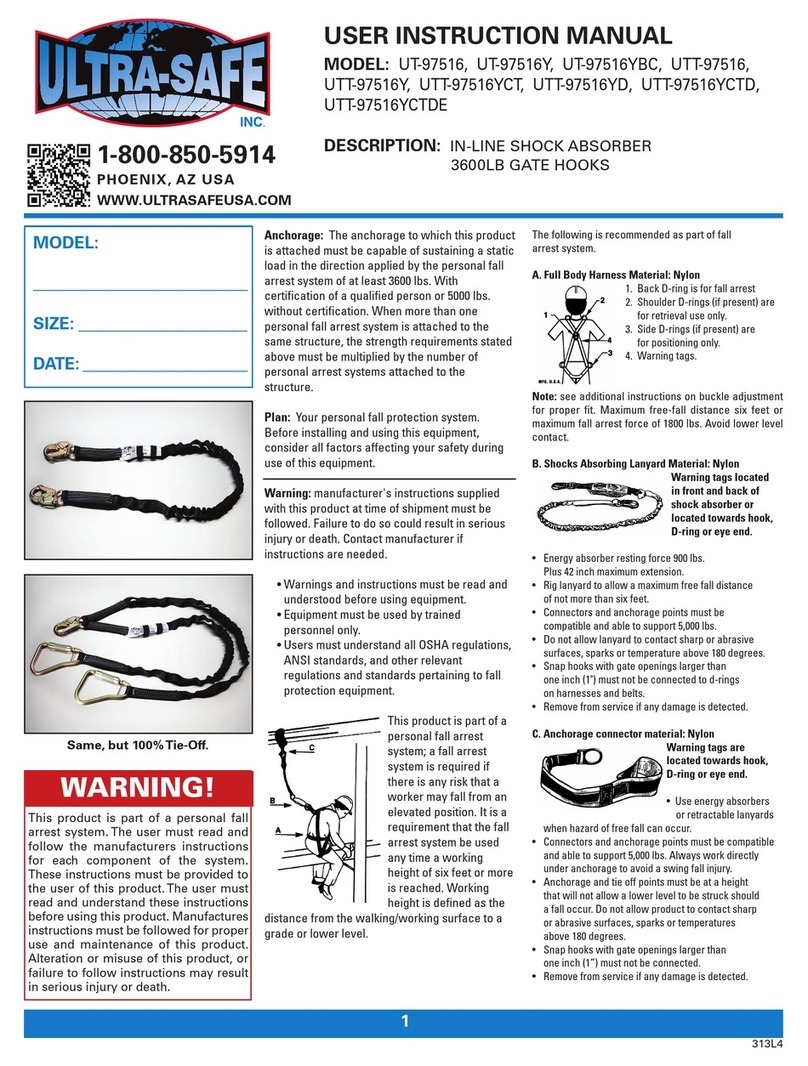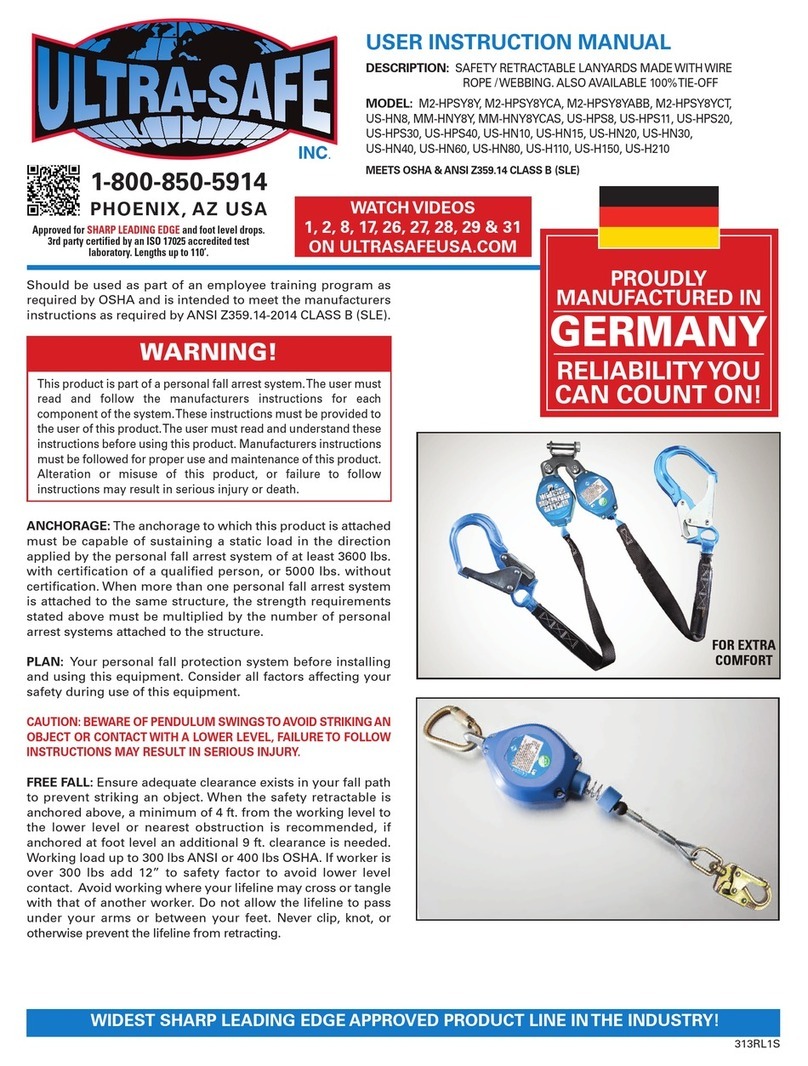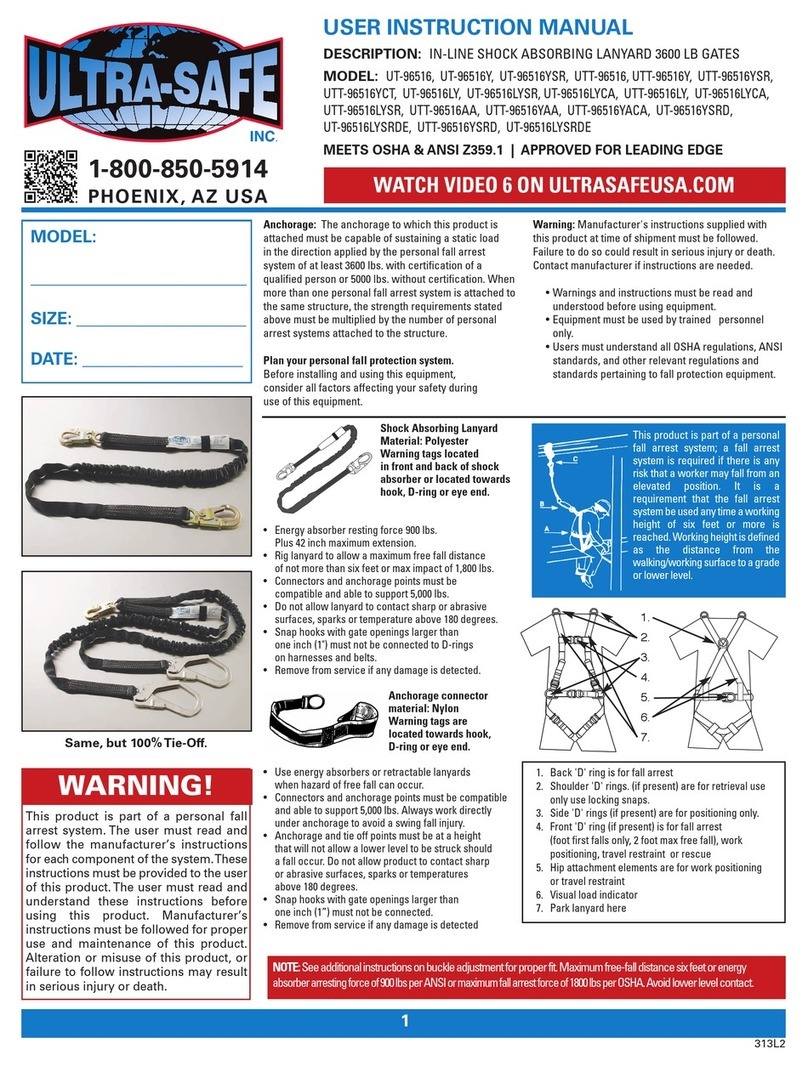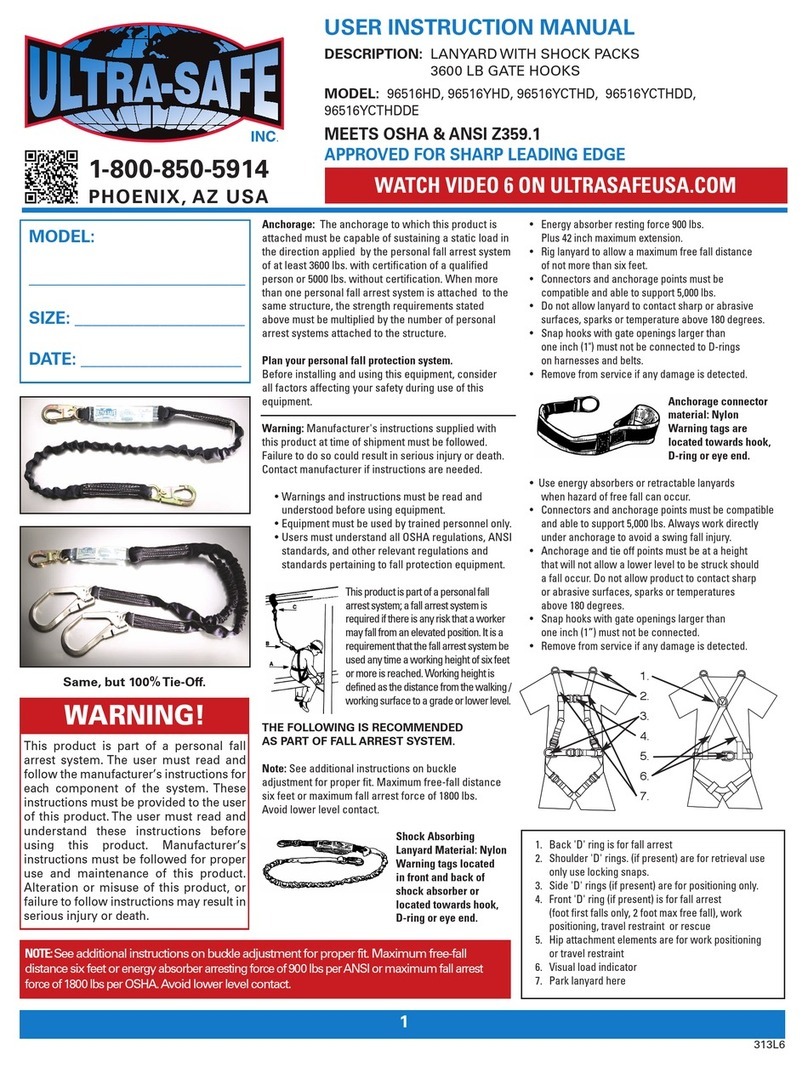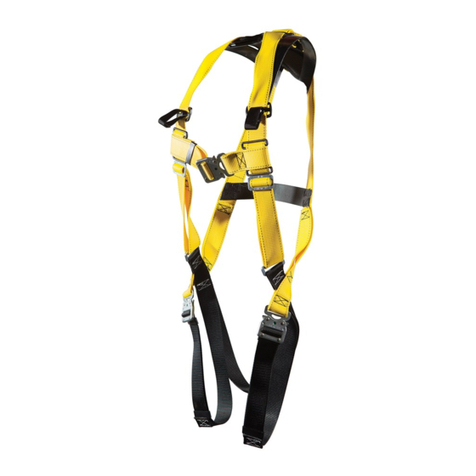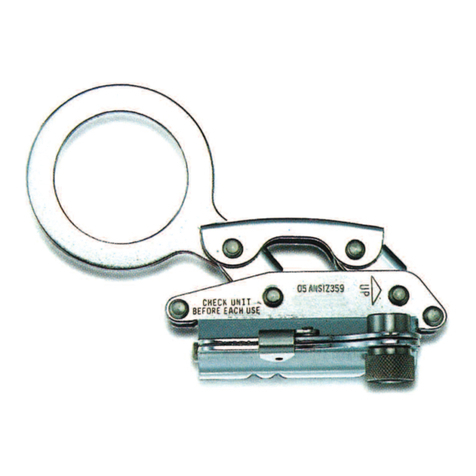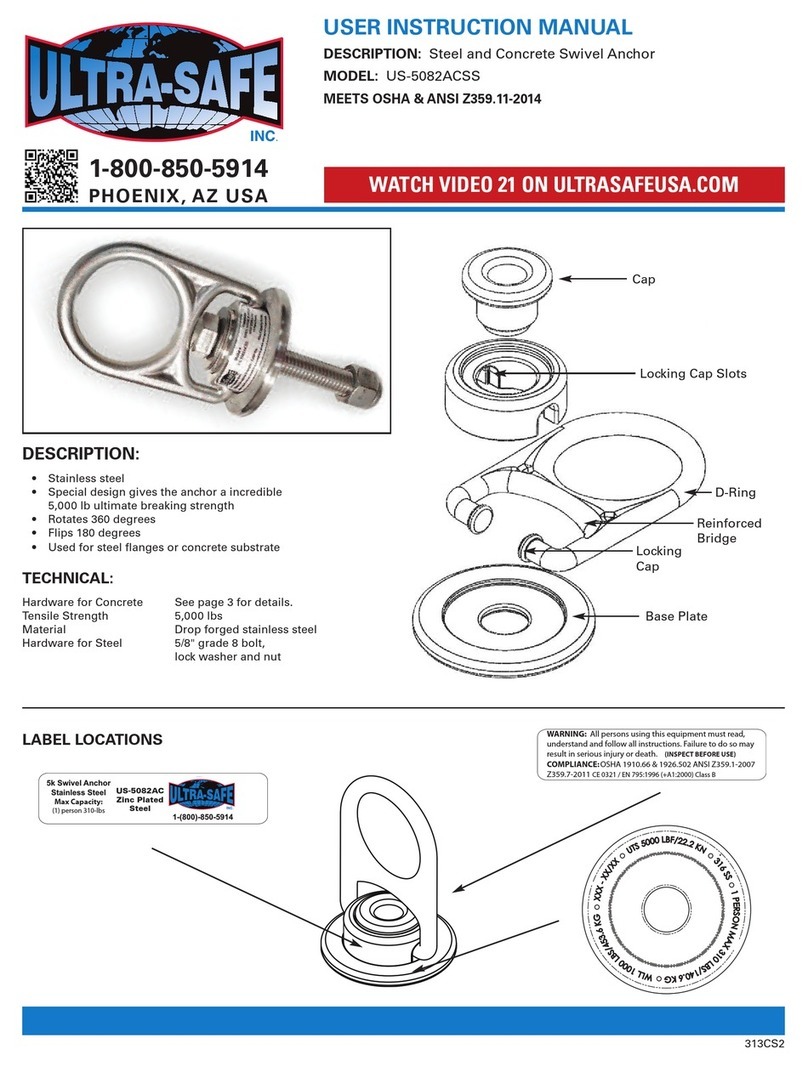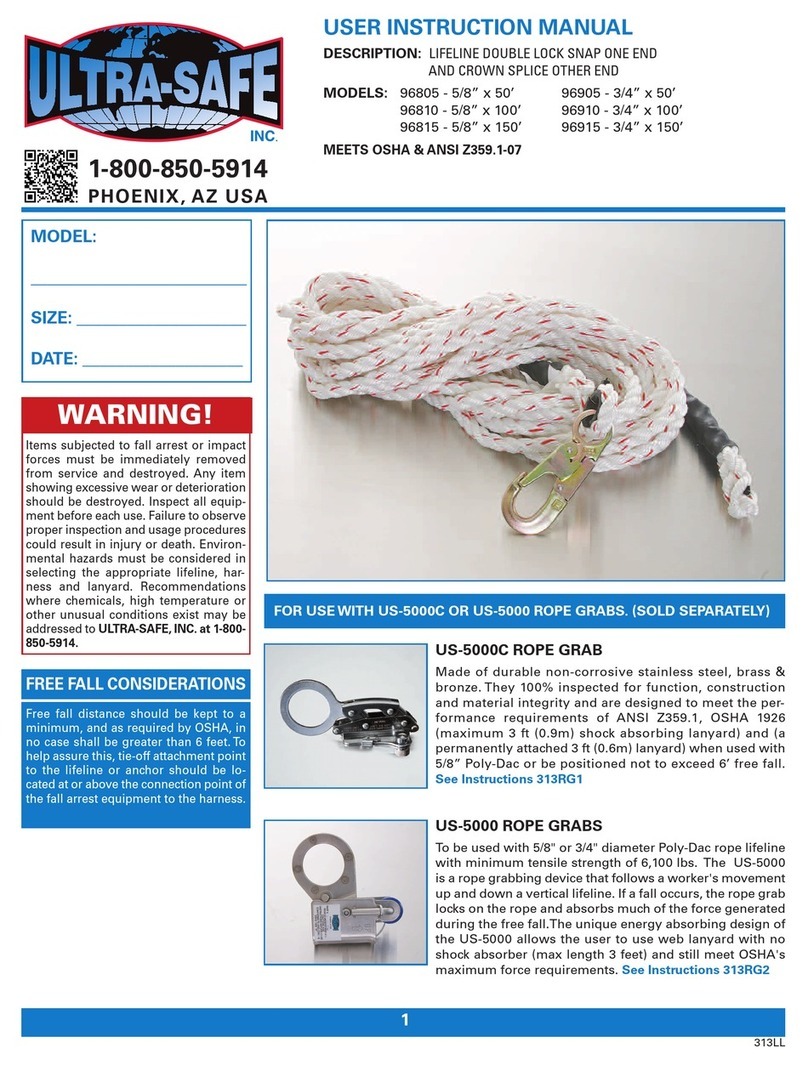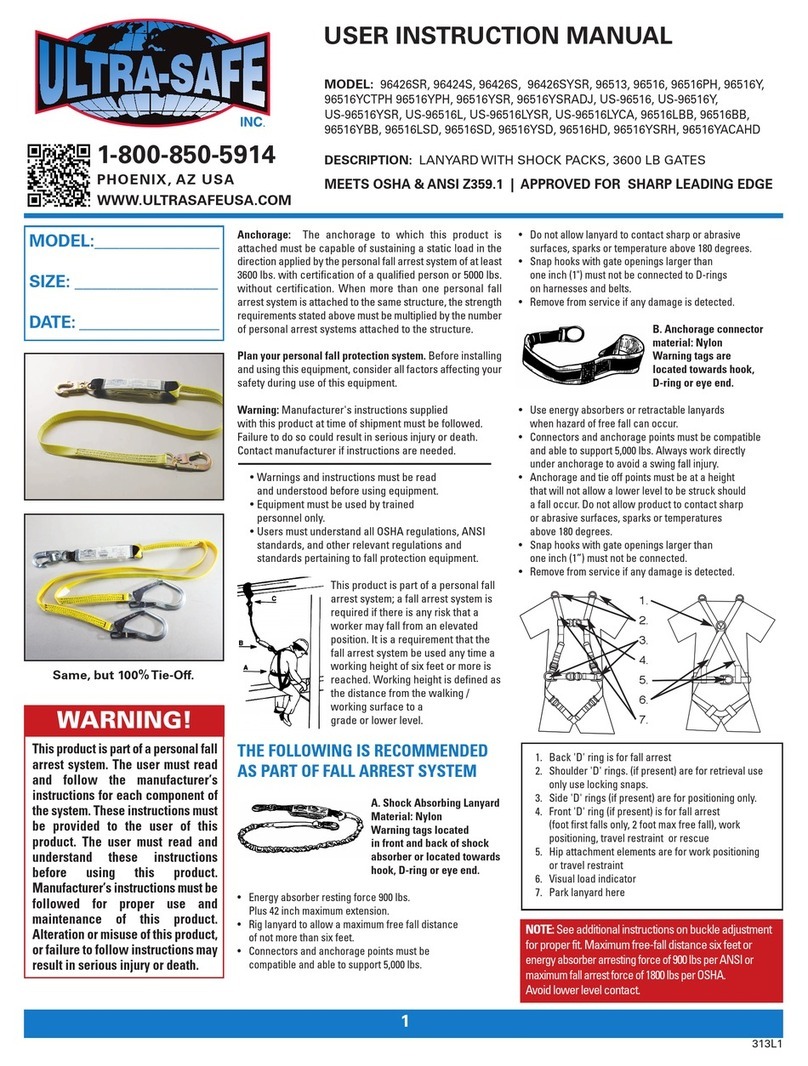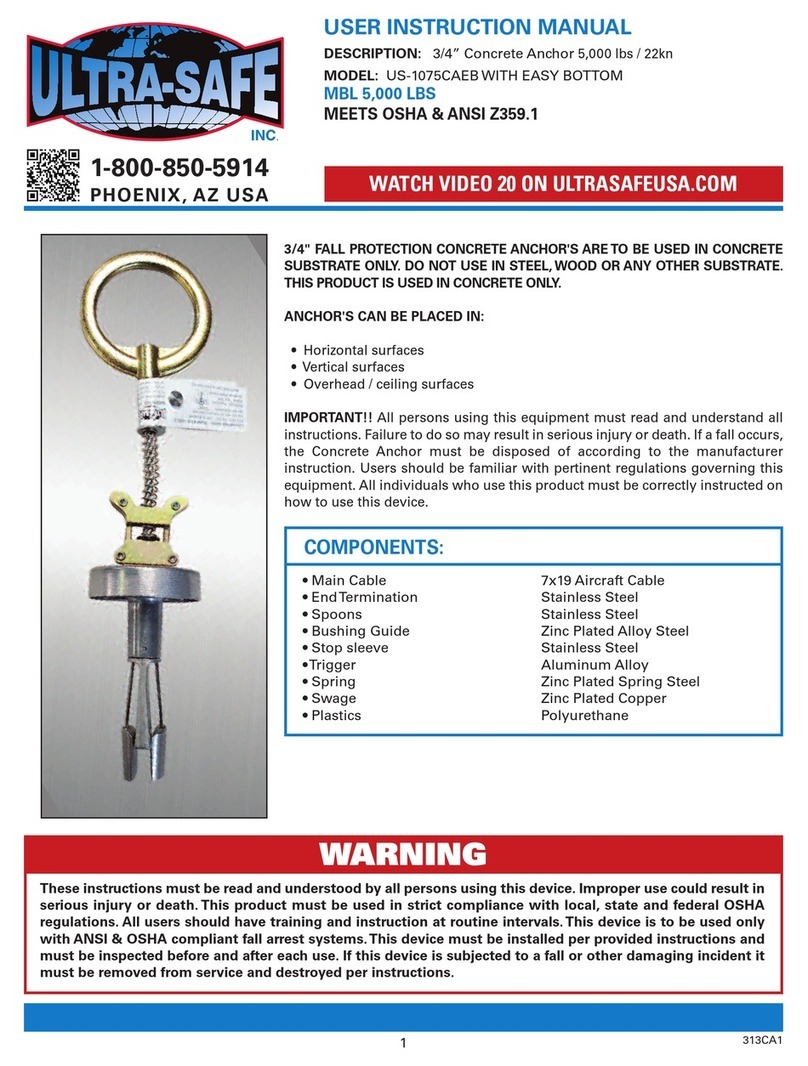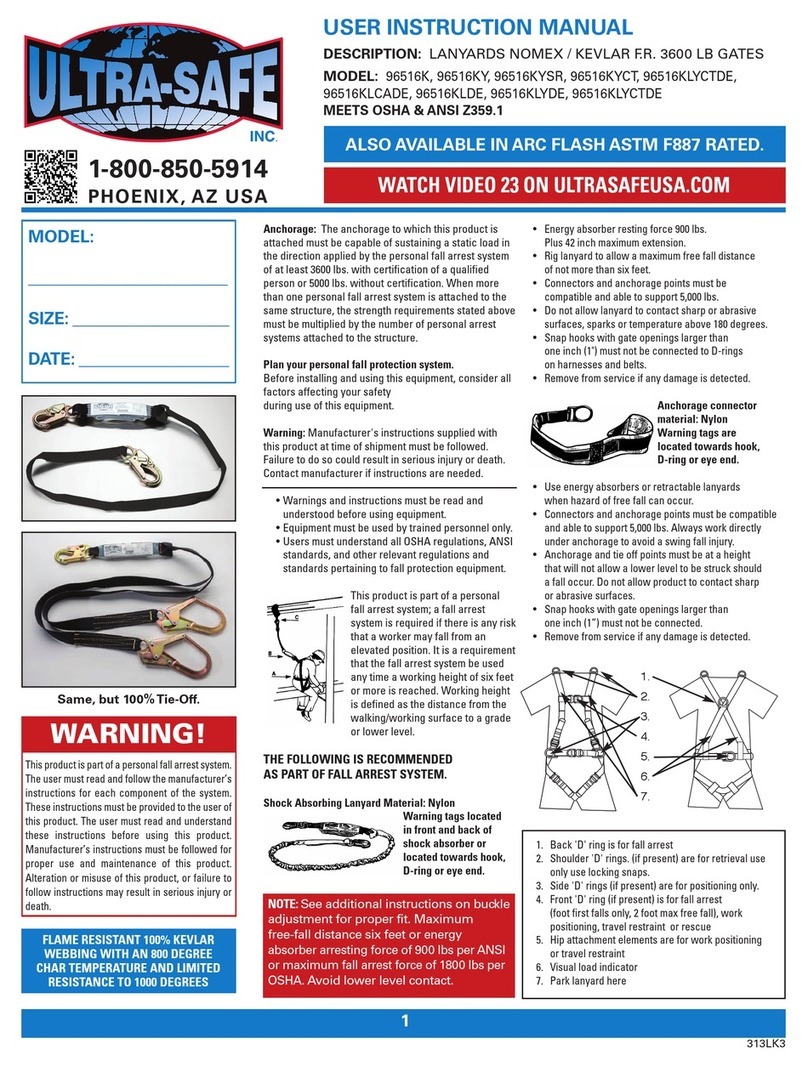
3
General -
1. Check for wear deter orat on.
Before each use, carefully inspect your
complete Ultra-Safe system for si ns of wear
or deterioration, or evidence of impact loadin .
Visually inspect for loose threads, pulled rivets,
burns, cuts, distortions, abrasions, or other
evidence of chemical or physical deterioration
that may have weakened the material or
assembly.
2. Inspect hardware for malfunct ons and cracks.
Check all snap hooks, buckles and D-Rin s.
3. Destroy and replace all worn
or damaged equ pment.
Immediately destroy and replace any component
which does not pass inspection.
Spec f c -
1. St tch ng and webb ng.
Check stitchin for broken, burned, cut or pulled
stitches. Broken strands of webbin appear as
tufts on the webbin surface. To visually check for
dama e caused by corrosives, heat, chemicals
and other conditions, hold the connectin device
with your hands six to ei ht inches apart. Bent the
webbin in an inverted "U" to cause surface
tension and expose problem areas. Inspect entire
len th. For deceleration units, check the stitchin
for broken, burned, cut or pulled stitches, and the
breakaway jacket for cuts, tears, broken stitches,
stretch marks or other evidence of impact load.
For aircraft-cable lanyards, check the full len th
for breaks, burns or cuts in the vinyl coverin and
the aircraft cable.
2. Check for broken strands.
Inspect rope lanyards for broken strands by
twistin the rope sli htly to undo the braidin .
Inspect the entire lanyard in this manner.
Lanyards with broken strands must be discarded.
3. Inspect all snap hooks, D-R ngs and
other metal parts.
Hardware must be checked for sharp ed es and
cracks. Rollers should not be distorted in shape
and should roll freely. Check all parts, especially
corners and attachments points, for wear and
cracks.
4. Destroy and replace all worn or damaged
Ultra-Safe equ pment.
If evidence of excessive wear, deterioration or
mechanical malfunction is observed, replace the
equipment immediately. Never work w th worn or
damaged Ultra-Safe equ pment. Us ng damaged
or worn equ pment can cause njury or death.
5. The nspector s the most mportant part
of any nspect on procedure.
Check all equipment thorou hly and follow all
safety procedures and uidelines. Do not take
any shortcuts', they could result in injury or death.
NOTE: Twisted rope, such as the nylon filament
and polyplus rope used in Ultra-Safe lanyards,
is subject to a condition known as "hocklin ",
which is similar to the twistin we often see
in a telephone handset cord. This can be
caused by a repetitive twistin movement
such as normal hand rotation in hookin
and unhookin , a lanyard dan lin freely,
or by usin the lanyard to suspend equipment.
Prevent ve measures nclude:
1) Never usin a lanyard for towin or hoistin ,
2) Inspection and smoothin out after each use,
3) Storin neatly. Some hocklin is normal,
and in itself is not cause to discard
the lanyard.
Inspect on Procedures
Ser al Number:
Model Number:
Date Purchased:
Inspect on Date Inspect on Items Noted Correct ve Act on Ma ntenance Performed
Date of F rst Use:
INSPECTION AND MAINTENANCE LOG
IMPORTANT NOTE: OSHA specifies that all employers covered by the Occupational Safety and Health Act are responsible for inspection and
maintenance of all tools and equipment used by employees, whether owned by the employees or by the company. All Ultra-Safe equipment
should be inspected before each use, and immediately removed from service if equipment does not pass inspection.
Approved By:
Approved By:
Approved By:
Approved By:
Approved By:
Approved By:
Approved By:
Approved By:
